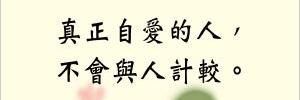關於熊貓的英語文章_500字
分類:四年級作文 字數:500字 編輯:小景
關於熊貓的英語文章 標籤:熊貓的自述作文 大熊貓的自述作文 有趣的英語課作文 一堂有趣的英語課作文
大熊貓(Ailuropoda melanoleuca),通常稱熊貓,是屬於熊科的一種哺乳動物,體色為黑白兩色。熊貓生長於中國中西部四川盆地周邊的山區,是中國特有的野生動物,亦為國寶。全世界現存大約3100隻左右,由於生育率低,加上對生活環境的要求相當高,是一種瀕危動物。[1]
大熊貓古今有許多別名:貔貅、大貓熊、竹熊、白熊、花熊、貘、華熊、花頭熊、銀狗、大浣熊、峨曲、杜洞尕、執夷、貊、猛豹、猛氏獸及食鐵獸等。
在中文裡,這個動物有兩種名稱:熊貓和貓熊。其來歷的一種說法說1869年,法國天主教傳教士阿爾芒·戴維德(Armand David)認識了熊貓后,給“熊貓”定名為“黑白熊”,歸屬於熊科。兩年後,動物學家進一步考查,研究它屬於貓熊科,將它進一步定名為“貓熊”。1940年代,在重慶北碚博物館展舉辦了一次動物標本展覽。當時,定名為貓熊,意思是它的臉型似貓那樣圓胖,但整個體型又像熊。由於中文使用者傳統上通常都習慣右到左的寫法,所以當時貓熊一詞是以右到左的方式書寫。在標準中文文法里,形容詞通常都被置放在名詞的前面。由於熊貓被一般人認為屬於熊科,因此貓是形容詞,熊是名詞。故,貓熊一詞在中文文法上是對的。到1940年代,很多中文使用者已經開始習慣左到右的中文讀法,所以當時重慶北碚博物館所展示的“貓熊”字樣就被大家誤讀成熊貓。從此以後,熊貓一詞便開始先在四川一帶流行起來,長此以往向傳訛誤,一至到今天,大部分的人也就習慣了使用熊貓一詞。
然而也有人認為這種說法是不對的。熊貓和貓熊兩種說法從一開始就沒有定論。[1]
熊貓一詞在中國大陸、馬來西亞和新加坡是最普及的稱呼,而在台灣,熊貓比較常用,不過,亦有人稱貓熊。
大熊貓主要棲息於海拔1400米—3500米,落葉闊葉林,針闊混交林和亞高山針葉林帶的山地竹林內。主要分佈在中國的陝西南部、甘肅及四川等地。
大熊貓的祖先是始熊貓(Ailuaractos lufengensis),這是一種由擬熊類演變而成的以食肉為主的最早的熊貓。始熊貓的主枝則在中國的中部和南部繼續演化,其中一種在距今約300萬年的更新世初期出現,體形比現在的熊貓小,從牙齒推斷它已進化成為兼食竹類的雜食獸,此後這一主支向亞熱帶擴展,分佈廣泛,在華北、西北、華東、西南、華南以至越南和緬甸北部都發現了化石。在這一過程中,大熊貓適應了亞熱帶竹林生活,體型逐漸增大,依賴竹子為生。在距今50-70萬年的更新世中、晚期是大熊貓的鼎盛時期。現在的大熊貓的臼齒髮達,爪子除了五趾外還有一個“拇指”。這個“拇指”其實是一節腕骨特化形成,學名叫做“橈側籽骨”,主要起握住竹子的作用。美國生物學家史蒂芬·傑伊·古爾德(Stephen Jay Gould)——關於這個寫過一篇散文,後來又用《熊貓的拇指》作為一部散文集的名稱。
The giant panda (Ailuropoda melanoleuca) ("black-and-white cat-foot") is a mammal classified in the bear family, Ursidae, native to central-western and southwestern China. It is easily recognized by its large, distinctive black patches around the eyes, ears and on its rotund body. Though technically a carnivore, the panda has a diet which is 98% bamboo. However, they may eat other foods such as honey, eggs, fish, and yams.
The Giant Panda is an endangered animal; an estimated 3,000 pandas live in the wild[2][3] and over 180 were reported to live in captivity by August 2006 in mainland China[3] (another source by the end of 2006 put the figure for China at 221[4]), with twenty pandas living outside of China.[citation needed] However, reports show that the numbers of wild panda are on the rise.[5][6]
The giant panda has long been a favorite of the public, at least partly on account of the fact that the species has an appealing baby-like cuteness that makes it seem to resemble a living teddy bear. The fact that it is usually depicted reclining peacefully eating bamboo, as opposed to hunting, also adds to its image of innocence. Though the giant panda is often assumed docile because of their cuteness, they have been known to attack humans, usually assumed to be out of irritation rather than predatory behavior.
The Giant Panda has a very distinctive black-and-white coat. Adults measure around 1.5 m long and around 75 cm tall at the shoulder. Males can weigh up to 115 kg (253 pounds). Females are generally smaller than males, and can occasionally weigh up to 100 kg (220 pounds). Giant Pandas live in mountainous regions, such as Sichuan, Gansu, Shaanxi, and Tibet. While the Chinese dragon has been historically a national emblem for China, since the latter half of the 20th century the Giant Panda has also become an informal national emblem for China. Its image appears on a large number of modern Chinese commemorative silver, gold, and platinum coins.
The Giant Panda has an unusual paw, with a "thumb" and five fingers; the "thumb" is actually a modified sesamoid bone, which helps the panda to hold the bamboo while eating. Stephen Jay Gould wrote an essay about this, then used the title The Panda's Thumb for a book of essays concerned with evolution and intelligent design. The Giant Panda has a short tail, approximately 15 cm long. Giant Pandas can usually live to be 20-30 years old while living in captivity.
Until recently, scientists thought giant pandas spent most of their lives alone, with males and females meeting only during the breeding season. Recent studies paint a different picture, in which small groups of pandas share a large territory and sometimes meet outside the breeding season.[citation needed]
Like most subtropical mammals, but unlike most bears, the giant panda does not hibernate.
[edit] Diet
Pandas eating bamboo at the National Zoo in Washington, D.C.Despite its taxonomic classification as a carnivore, the panda has a diet that is primarily herbivorous, which consists almost exclusively of bamboo. This is an evolutionarily recent adaptation. Pandas lack the proper enzymes to digest bamboo efficiently, and thus derive little energy and little protein from it.
While primarily herbivorous, the panda still retains decidedly ursine teeth, and will eat meat, fish, and eggs when available. In captivity, zoos typically maintain the pandas' bamboo diet, though some will provide specially formulated biscuits or other dietary supplements.
關於熊貓的英語文章 作文推薦:

相關作文
- ·關於熊貓的英語文章500字
- ·關於櫻花的英語文章900字
- ·關於代溝的英語文章600字
- ·關於食物的英語文章1100字
- ·關於親情的英語文章900字
- ·關於春天的英語文章500字
- ·關於狗的英語文章100字
- ·關於狼的英語文章300字
- ·關於死的英語文章800字
- ·關於校園的英語文章700字
- ·關於友情的英語文章500字
- ·關於友誼的英語文章300字
- ·關於運動的英語文章1300字
- ·關於豬的英語文章400字
- ·有關熊貓的英語作文200字
- ·關於熊孩子的事700字
- ·初中英語作文關於火的英語作文200字
- ·關於防火的英語作文六年級英語作文100字
- ·一位六年級小學生寫的英語小文章300字
- ·什麼文章才算好文章600字
- ·華麗的文章不一定是好文章350字
- ·關於怎樣過暑假的英語作文350字
- ·初中生關於暑假的英語作文100字
- ·關於濰坊的my hometown200字
- ·關於體育人物的英語作文100字
- ·關於讓座的英語作文200字
- ·關於春節的英語作文-happyn300字
- ·關於寫姚明的英語作文200字
- ·關於ilovemymother的100字
- ·關於寒假的英語作文400字
類別相關
- ·關於我400字
- ·關於時間的作文400字
- ·關於生命的故事1100字
- ·關於荏苒400字
- ·關於聯歡會的作文:有趣的聯歡會350字
- ·關於狼的英語文章300字
- ·關於荷花的作文450字
- ·關於海洋污染的建議書300字
- ·關於成長的對話700字
- ·關於“o”的遐想400字
- ·想飛的鴨子和被凍住腳的大雁1100字
- ·想飛的小雞700字
- ·想飛的烏龜1100字
- ·讓夢想飛800字
- ·幻想飛機100字
- ·軟弱作文 感恩母親作文
- ·珍愛生命平安出行作文 不孤單作文
- ·徘徊作文 使我感動的一件事作文
- ·美麗的黑作文 心靈的雨作文
- ·想告訴你作文 是你作文
- ·狐狸與烏鴉作文
- ·秋遊作文
- ·教師頌作文
- ·操場上的笑聲作文400字
- ·我的校園生活作文600字
- ·理財作文500字
- ·夕陽作文250字 賞梅作文600字
- ·環境保護作文400字 夢見作文500字
- ·北京奧運開幕式作文 得到作文600字
- ·教師節作文450字 喜慶作文700字
- ·讓心飛翔作文 好媽媽作文350字
- ·游張家界作文